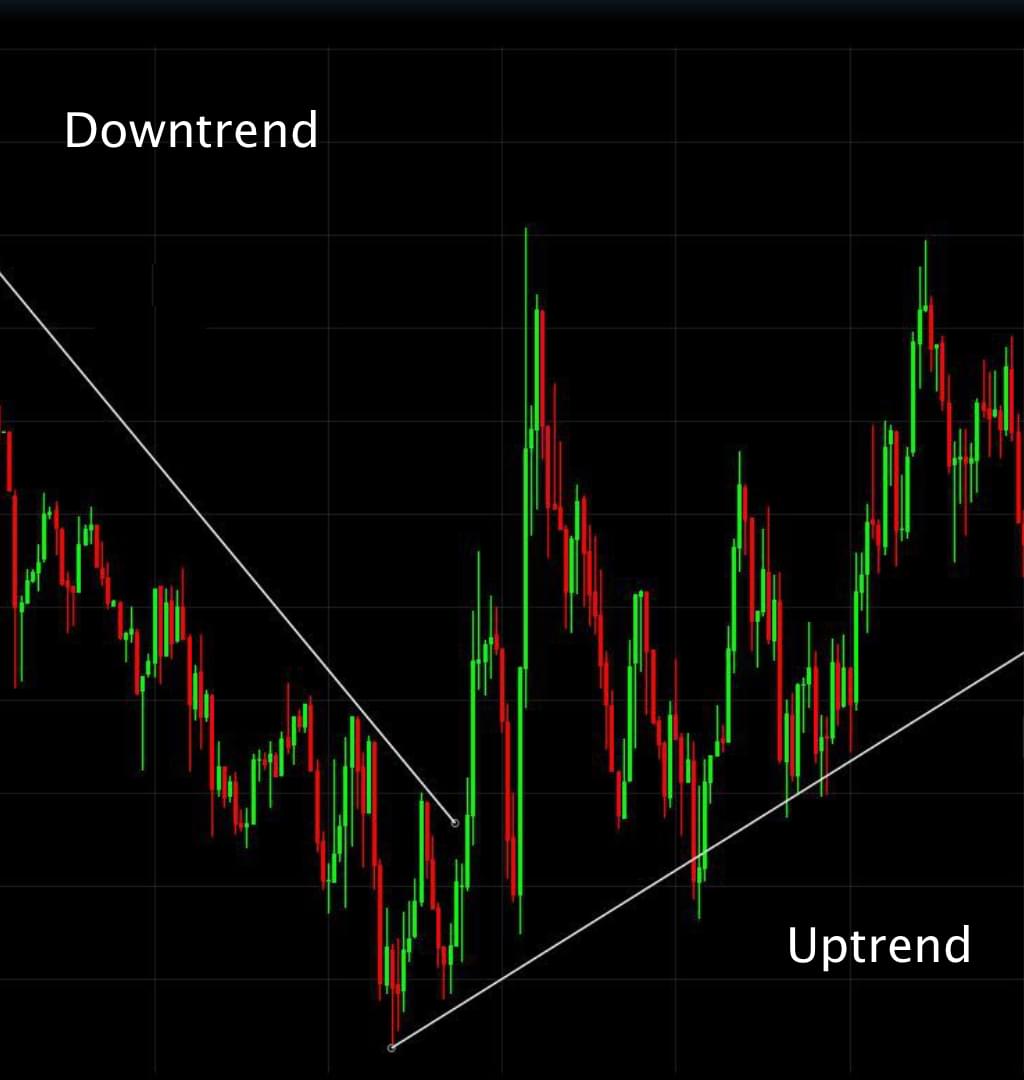Mathematics Of Trend Following Investment
Filed in: Investment |Economy
04 March 2025
The Mathematics of Momentum
Key Points Summary
- Trend following strategies use mathematical models to identify and capitalise on market momentum, eliminating emotional biases and enabling precise risk management across multiple asset classes.
- Unlike traditional equity/bond portfolios, trend following can provide significant downside protection during market downturns while offering genuine diversification through exposure to commodities, currencies, and fixed income.
- Despite challenges in choppy markets and performance cyclicality, trend following serves as an excellent complement to traditional investments by providing "crisis alpha" potential, inflation protection, and overall portfolio volatility reduction.
In the evolving landscape of investment methodologies, trend following has emerged as a systematic strategy that capitalises on market momentum rather than attempting to predict future price movements.
Unlike traditional approaches that rely on fundamental analysis or market timing, trend following employs mathematical models to identify and exploit persistent market trends. This article explores the principles, advantages, limitations, and portfolio applications of trend following investment strategies.
The Mathematical Edge: Trend Following vs. Traditional Models
Traditional investment portfolios typically consist of a mix of equities and bonds, with allocation percentages adjusted based on risk tolerance, time horizon, and market outlook. While this approach has served investors for decades, it contains inherent limitations that mathematical trend following strategies can overcome.
The mathematical foundation of trend following provides several distinct advantages. First, it removes emotional decision-making from the investment process. Human investors often fall prey to cognitive biases such as recency bias, loss aversion, and confirmation bias. A rules-based mathematical system eliminates these psychological pitfalls by adhering strictly to predefined parameters for entry, exit, and position sizing.
Second, mathematics enables precise risk management. Trend following systems typically incorporate volatility-adjusted position sizing, allowing larger allocations to less volatile instruments and smaller allocations to more volatile ones. This mathematical approach to risk calibration can deliver more consistent returns compared to the subjective risk assessments common in traditional equity/bond allocations.
Third, trend following models can be rigorously backtested across different market environments. By applying historical data to mathematical models, investors can evaluate how strategies would have performed during various market conditions, including bull markets, bear markets, and sideways markets. This evidence-based approach provides greater confidence in strategy robustness compared to traditional models that often rely on assumptions about future economic conditions.
Finally, mathematical trend following strategies can incorporate quantitative signals from multiple timeframes and technical indicators, creating a more comprehensive market view than the typically qualitative approach of equity/bond allocation decisions. By combining short-term, medium-term, and long-term signals, trend following systems can capture profits across different cyclical phases.
Strategic Focus: The Benefits of Limiting Investment Classes
While trend following can theoretically be applied to any market with sufficient liquidity and price data, there are significant advantages to limiting the scope of investment classes.
First, focusing on specific asset classes allows for deeper specialisation and expertise. Markets have unique characteristics -- volatility profiles, trading hours, regulatory frameworks, and seasonal patterns. By concentrating on select markets, trend following systems can be optimised for these specific attributes rather than applying a one-size-fits-all approach.
Second, limited scope reduces complexity and operational challenges. Managing positions across dozens of global markets requires sophisticated infrastructure, including data feeds, execution capabilities, and risk monitoring systems. A more focused approach simplifies implementation and reduces operational risks.
Third, certain markets exhibit stronger trending behaviour than others. Commodities and currencies, for instance, often display clearer and more sustained trends than individual stocks. By focusing on markets with stronger trending characteristics, investors can improve the efficiency of their trend following strategies.
Fourth, limiting investment classes can reduce correlation within the portfolio. A carefully selected basket of markets from different sectors (e.g., energies, metals, agricultural commodities, currencies, and fixed income) often provides better diversification than a broader selection that includes markets with similar drivers.
Comparative Advantages: Trend Following vs. Index and Active Equity Funds
When compared to equity index tracking funds or actively managed equity funds, trend following strategies offer several distinct advantages:
• Downside Protection: Perhaps the most significant advantage is the ability to profit or preserve capital during market downturns. Unlike equity index funds that remain fully invested regardless of market direction, trend following strategies can shift to cash or even short positions during prolonged downtrends, providing valuable portfolio protection during bear markets.
• Diversification Beyond Equities: Trend following typically operates across multiple asset classes, including commodities, currencies, and fixed income, providing genuine diversification beyond the equity risk premium that dominates index funds.
• Lower Correlation to Traditional Assets: Trend following strategies historically demonstrate low or even negative correlation to equities and bonds during market stress periods, precisely when diversification benefits are most valuable.
• Adaptability to Changing Market Regimes: While equity index funds perform well in bull markets but struggle in bear or sideways markets, trend following can adapt to changing market regimes, capturing opportunities regardless of the prevailing economic environment.
• Liquidity Management: Trend following strategies typically trade highly liquid futures and currency markets, allowing for more efficient scaling and reduced slippage compared to strategies investing in less liquid individual stocks.
Potential Weaknesses of Trend Following Strategies
Despite its advantages, trend following is not without challenges and limitations:
• Whipsaw Markets: Trend following strategies typically struggle during choppy, range-bound markets characterised by frequent reversals. These "whipsaw" conditions can lead to multiple false signals and consecutive small losses.
• Psychological Challenges: While mathematically sound, trend following can be psychologically challenging to implement. Extended drawdown periods and long stretches without new equity highs can test even disciplined investors' patience
• Timing Risk: Trend followers often capture the middle portion of trends but miss turning points. This systematic lag means giving back some profits at trend reversals, which can be frustrating even when the strategy performs as designed.
• Performance Cyclicality: Trend following strategies exhibit their own performance cycles, sometimes experiencing multi-year periods of underwhelming returns, which requires significant patience from investors.
• Capacity Constraints: As assets under management grow, some market niches become too small relative to position sizes, potentially reducing the universe of tradable markets and diminishing returns.
Portfolio Integration: The Role of Trend Following in a Diversified Approach
Given its distinctive characteristics, trend following serves as an excellent complement to traditional investment approaches rather than a complete replacement. Here's why including trend following in a broader portfolio makes sense:
• Crisis Alpha Potential: Trend following strategies have historically performed well during prolonged market crises, earning them the label "crisis alpha." This characteristic makes them valuable portfolio diversifiers during periods when traditional diversification fails.
• Inflation Hedge: With exposure to commodities and currencies, trend following strategies can provide inflation protection that traditional equity and bond portfolios often lack.
• Volatility Dampening: When combined with traditional investments, trend following can reduce overall portfolio volatility and improve risk-adjusted returns, creating more stable long-term performance.
• Psychological Balance: The different performance patterns of trend following compared to traditional investments can provide psychological relief during market downturns, making it easier to maintain long-term investment discipline.
Conclusion
Trend following investment strategies offer a mathematically rigorous alternative to traditional investment approaches. By systematically identifying and exploiting market trends across selected asset classes, these strategies can provide valuable diversification benefits, downside protection, and improved risk-adjusted returns.
While not without challenges, particularly during choppy market conditions, trend following deserves consideration as a component of well-diversified investment portfolios. Its mathematical foundation, adaptability to changing market conditions, and historically low correlation to traditional assets make it a powerful tool for investors seeking to enhance their long-term financial outcomes in an increasingly complex and interconnected global marketplace.
If you would like to learn more about an award winning trend following fund use the button below.


